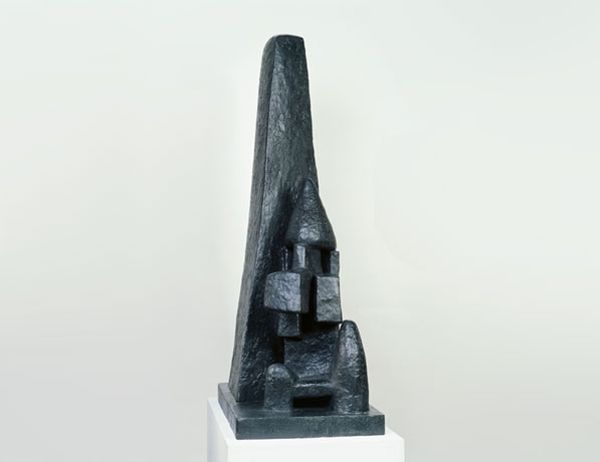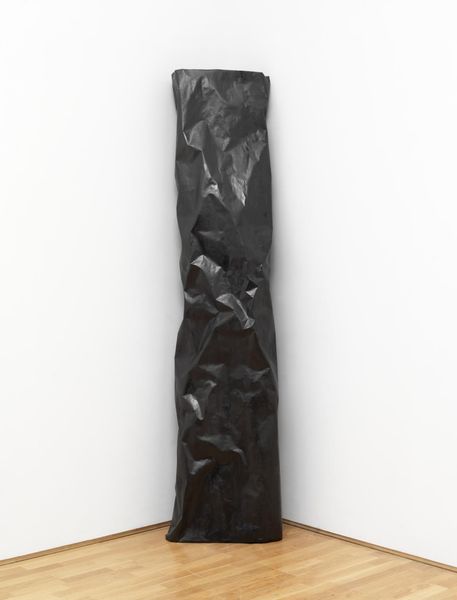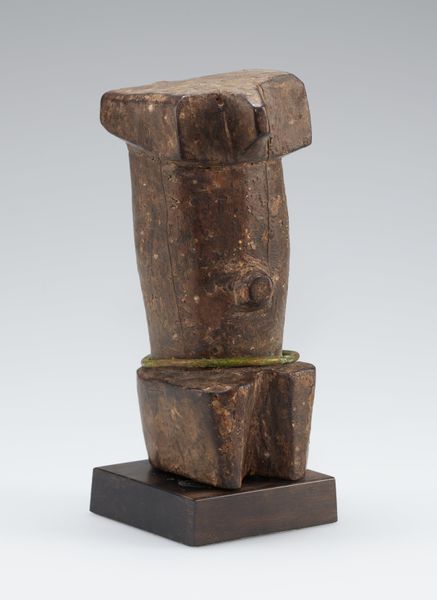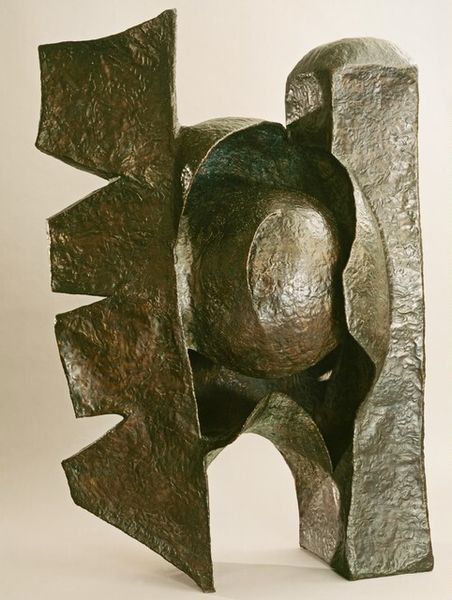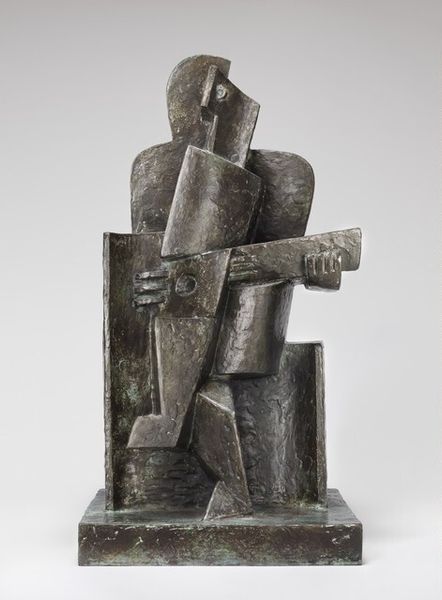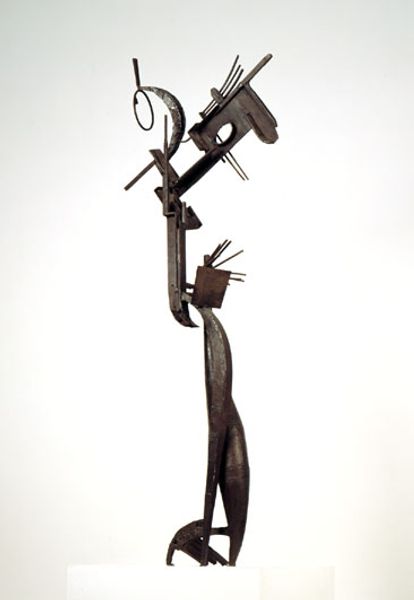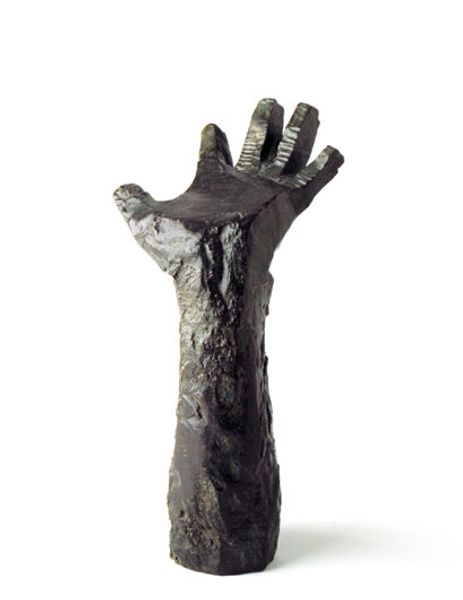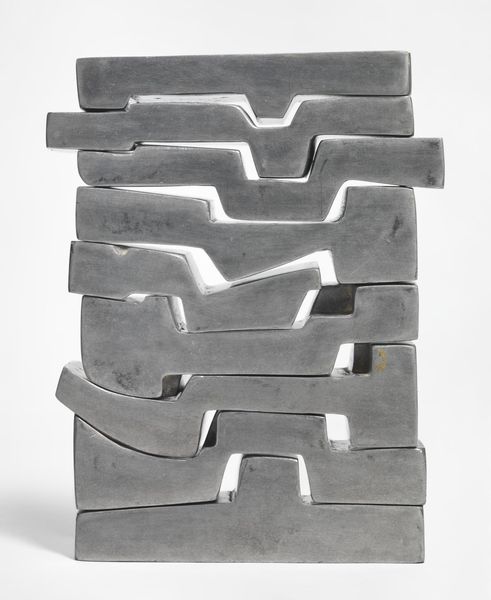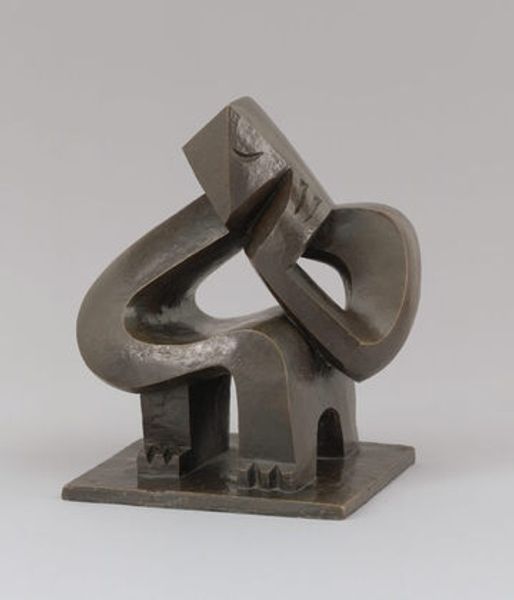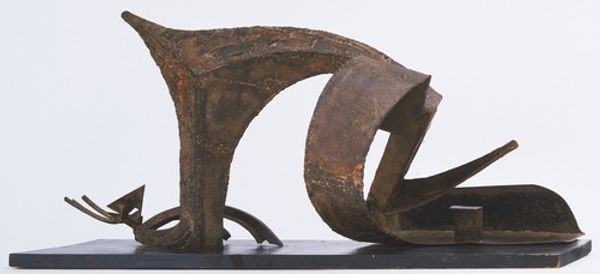
carving, bronze, sculpture
#
portrait
#
cubism
#
carving
#
sculpture
#
bronze
#
geometric
#
sculpture
Copyright: Public domain US
Editor: Up next is Jacques Lipchitz's "Head," a bronze sculpture from 1915. I'm struck by its abstract, almost geometric quality; it's clearly a head, but radically simplified. What can you tell us about this piece? Curator: It's a great example of Cubist sculpture emerging in a very turbulent period in Europe. Lipchitz, along with other artists like Picasso and Braque, were grappling with how to represent reality after advancements in photography, right? But also within the rising tides of nationalism before the first World War, and the increasing alienation felt in modern, industrial society. The sculpture breaks down the traditional portrait, deconstructing it into facets. How do you think the public received something so unconventional? Editor: I imagine some viewers were confused or even resistant to the abstraction. Were critics supportive? Curator: Early Cubism was highly divisive! The established art institutions initially rejected this art outright; conservative critics felt it abandoned beauty and skill. The acceptance of Cubism reflects changing tastes, shifting patronage and support from new gallery spaces willing to champion radical aesthetics. But also it signals, importantly, that artists began actively making work to challenge older aesthetics; challenging the notion of what belongs in museums. Do you see the influence of any other movements in it? Editor: Now that you mention it, the sharp angles make me think of Futurism a little bit. Curator: Absolutely. The Futurist interest in dynamism and the machine age shares some conceptual ground. These avant-garde movements cross-pollinated, fueled by the need to redefine representation. We see it entering the public sphere and impacting socio-political debates through art. Editor: I'd never considered the political implications of Cubism so directly, but now I understand that a change in artistic expression also prompts cultural shifts in societal thinking and in previously unquestioned establishments. Thanks! Curator: It’s an exciting thought, isn't it? Art shaping culture! I find I am left contemplating, too, the place that institutions hold in championing or censoring these radical statements.
Comments
No comments
Be the first to comment and join the conversation on the ultimate creative platform.

